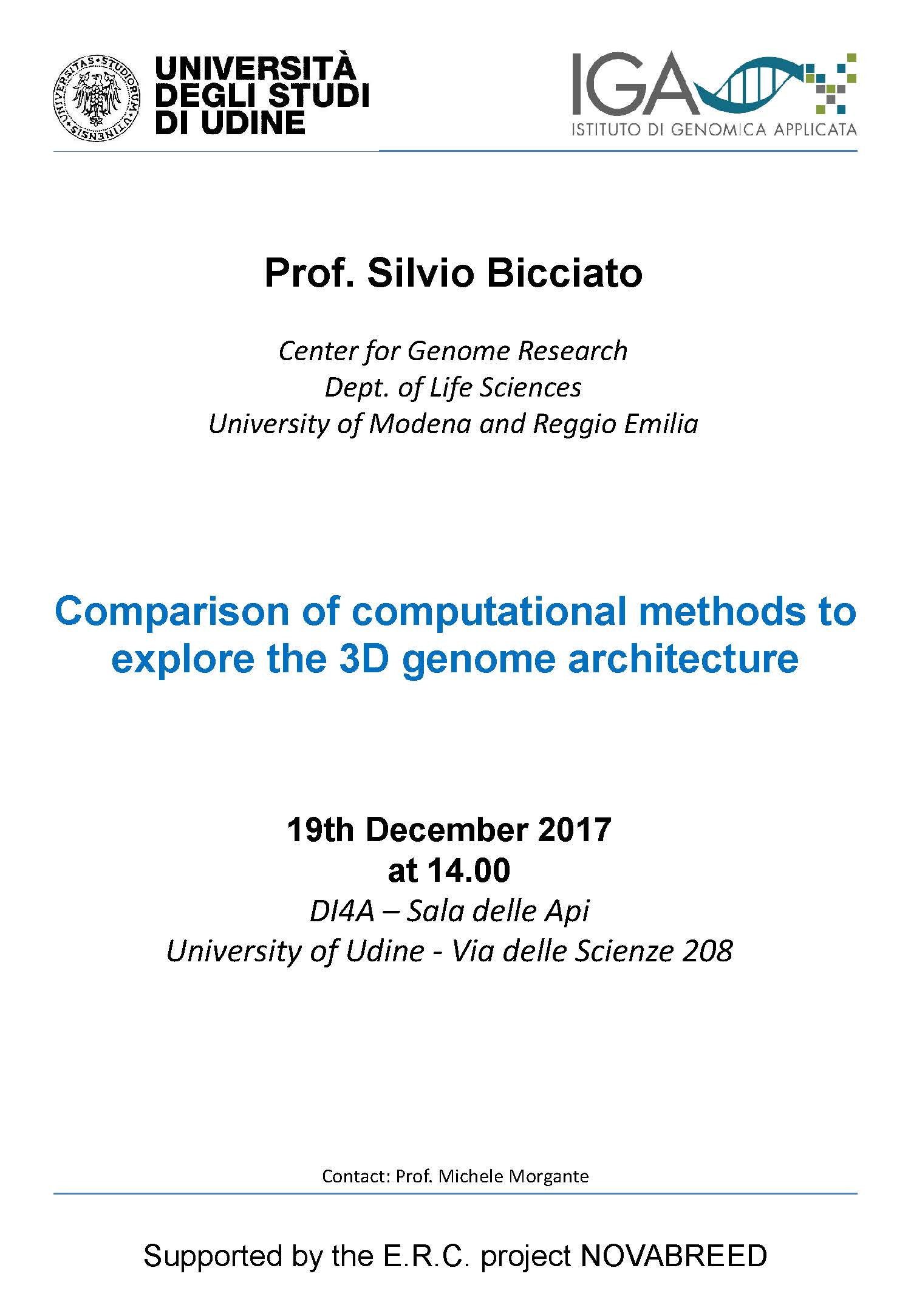Seminar of Prof. Silvio Bicciato from the Center for Genome Research Dept. of Life Sciences University of Modena and Reggio Emilia
The 3D organization of chromatin within the nucleus is crucial for genome functionality. This is true at multiple levels of resolution: on a large scale, with chromosomes occupying distinct volumes (chromosome territories), at the level of individual chromatin fibers, organized in compartmentalized domains (as the Topologically Associating Domains, TADs), and down to the formation of short range chromatin interactions (as enhancer-promoter loops). The widespread adoption of high-throughput techniques derived from Chromosome Conformation Capture (3C) has been instrumental in advancing the knowledge of chromatin nuclear organization. In particular, Hi-C has the potential to achieve the most comprehensive characterization of chromatin 3D interactions, since, in principle, it allows detecting any pair of restriction fragments connected as a result of ligation by proximity. The analysis of the enormous amount of genomic data produced by Hi-C required the development of ad hoc algorithms and computational procedures. However, despite the increasing number of available bioinformatics pipelines, no consensus on the optimal approach to analyze Hi-C data has been reached, yet. Here, we will present a quantitative comparison of the performances of Hi-C data analysis methods for the identification of multi-scale chromatin structures using experimental and simulated data. In general, we will show that, depending on the tool, identified structures vary in terms of quantity and characteristics and are more reproducible for TADs than for interactions. Moreover, we will demonstrate how the various tools greatly differ in terms of usability, interoperability, stability of the implementation, and computing resources required to complete the analysis.

